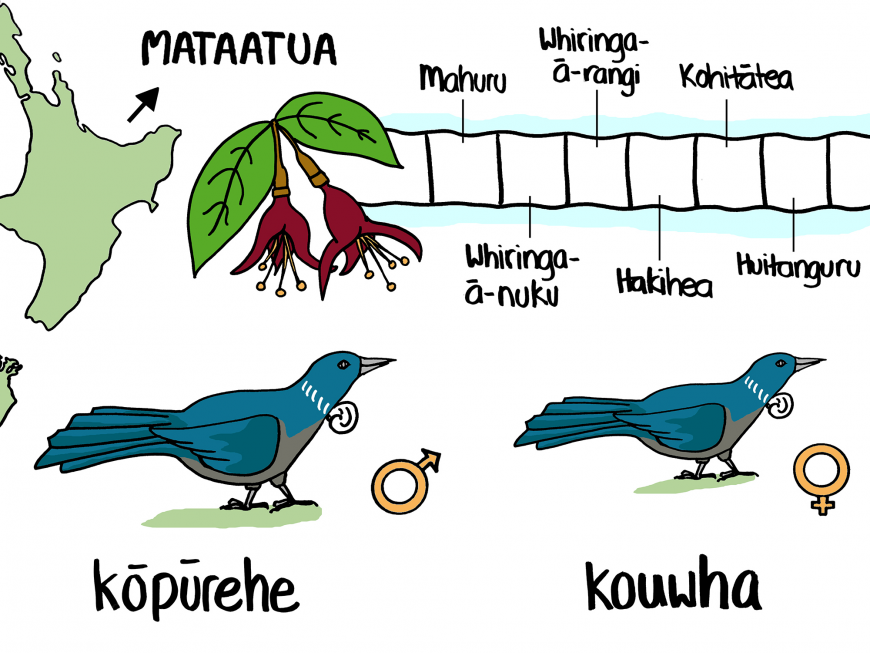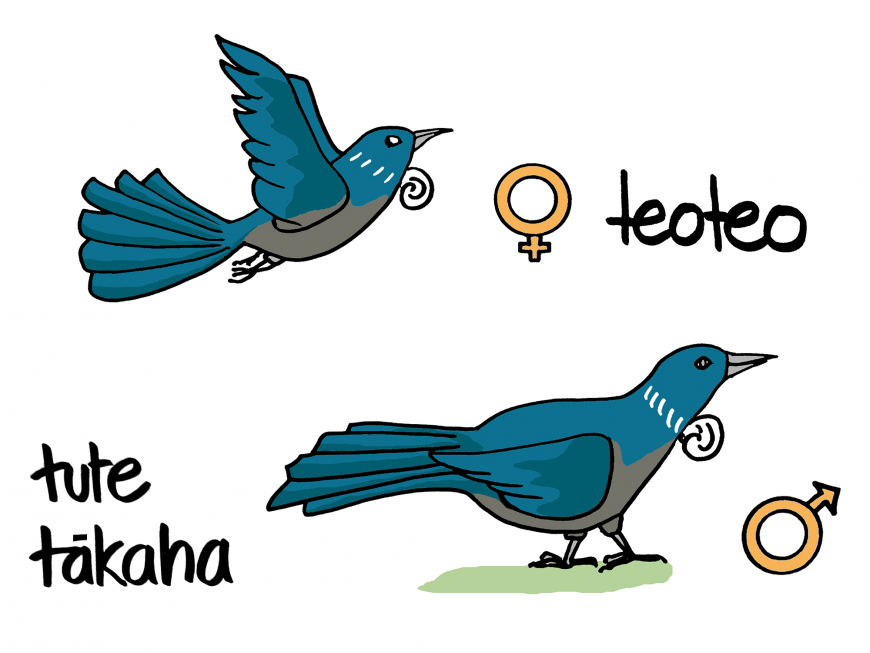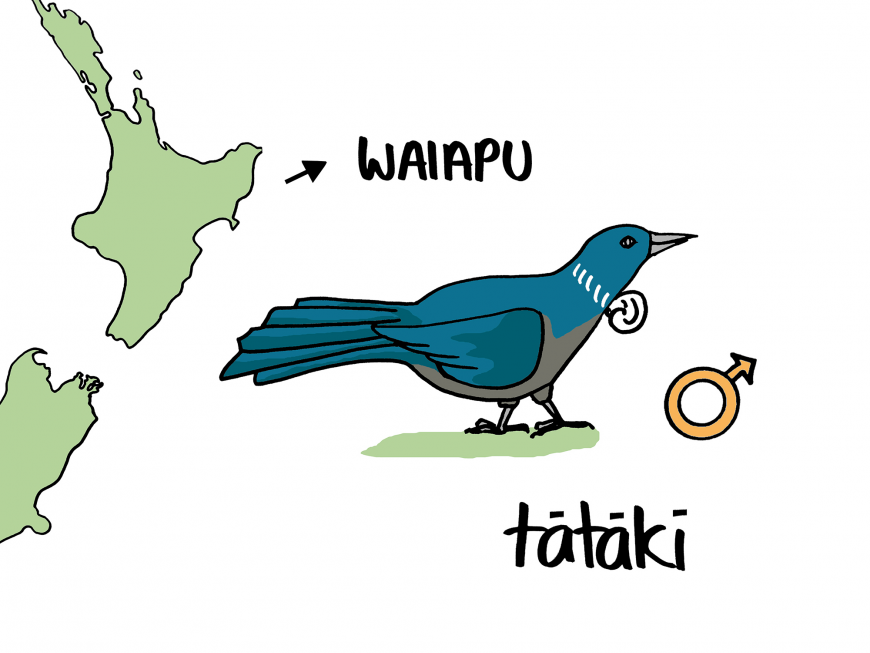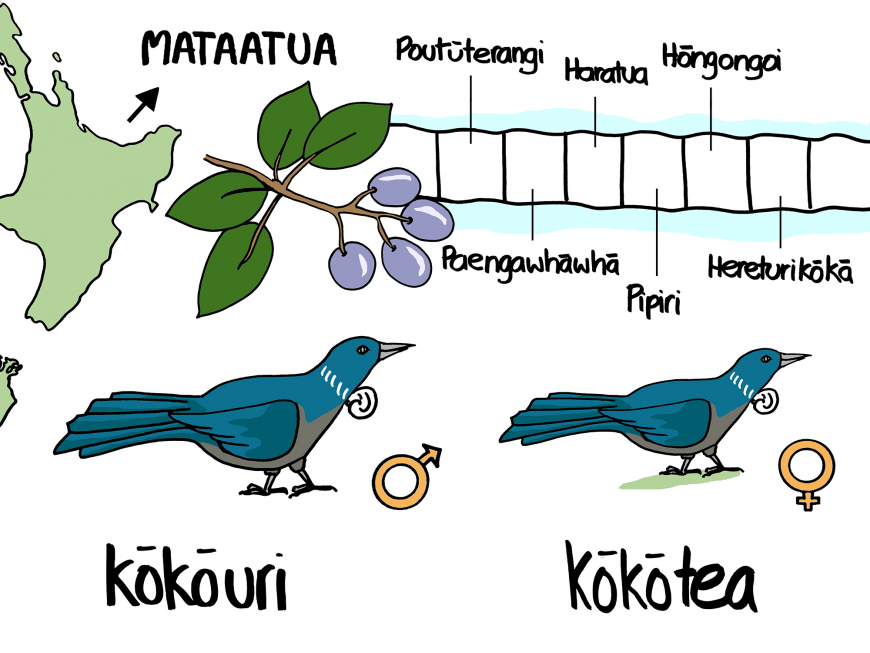Ngā ingoa Māori
Back a level
In this section
Ko te kōkō tētahi o ngā ingoa mahamaha o te tūī, 13 atu anō ngā ingoa Māori kua mau mō tēnei momo manu: te kōkōtaua; te kōkōtea; te kōkōuri; te kōpūrehe; te kouwha; te pikari; te pitui; te tākaha; te takahē; te tataki; te teoteo; te tute hoki.
Hei ngā ingoa nei te whakaāta ai ngā rerekētanga o te manu e ai ki tōna āhua tāne, uwha rānei, ōna wāhi noho, ngā wāhanga hoki o te tau.
Ngā ingoa whakaāta i te wā puāwai te rākau

Some names are linked to seasonal patterns. In the Mataatua tribal area, male kōkō are called kōpūrehe and females kouwha from the time the kōtukutuku (or native fuchsia, Fuchsia excorticata) flowers until the fruiting of the hīnau (or Elaeocarpus dentatus, a tall forest tree).



